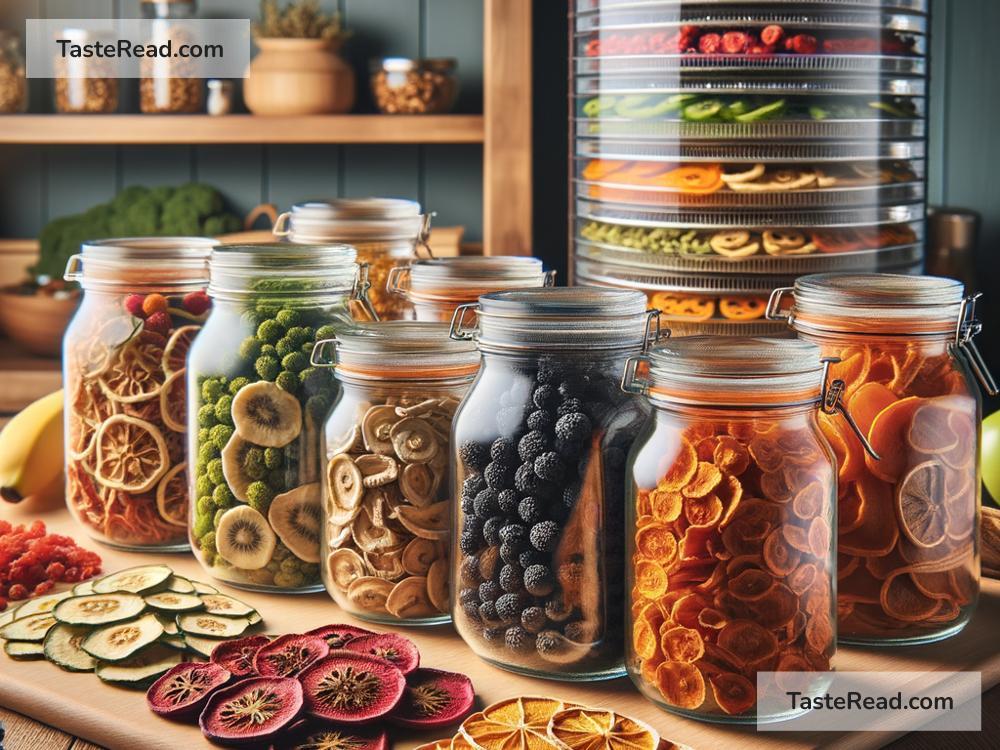How to Maintain Nutritional Quality in Dried Foods
Dried foods are a fantastic option for preserving fruits, vegetables, meat, and even herbs for long periods of time. They are lightweight, convenient to store, and often retain much of their nutrients. However, if not handled or stored properly, the nutritional quality of dried foods can diminish over time. In this post, we’ll explore simple tips and strategies to ensure your dried foods stay nutrient-rich and tasty for longer.
Understanding Dried Foods
Dried foods go through a dehydration process, where moisture is removed to prevent bacteria and mold growth. Fruits like apples, mangoes, and bananas are commonly dried, as are vegetables such as mushrooms, peas, and tomatoes. Meat snacks like beef jerky and fish jerky, as well as dried herbs and spices, are also widely loved.
While drying food extends its shelf life significantly, this process can affect its nutritional content. Changes in vitamins, flavor, and texture may occur over time, so proper storage and preparation are key to maintaining their quality.
5 Tips for Maintaining Nutritional Quality in Dried Foods
Here are some easy tips you can follow to keep dried foods nutritious and fresh:
1. Choose High-Quality Fresh Produce
The nutritional value of dried foods starts with the quality of the fresh foods you use. Before drying, select ripe and fresh fruits, vegetables, or meats that are free from bruises, mold, or other damage. Nutrient-rich produce will yield more nutrient-rich dried foods.
2. Use Proper Drying Techniques
The drying process determines how much nutrition stays intact in the final product. Select the right drying method depending on the food you’re drying. The most common methods include:
- Air Drying: Best for herbs.
- Oven Drying: Suitable for fruits, vegetables, and meats at low temperatures.
- Dehydrator Usage: Ideal for achieving consistent results with fruits, veggies, or jerky.
- Sun Drying: An eco-friendly option, but it is weather-dependent.
Always follow recommended drying temperatures. For example, fruits and vegetables dry well at 120–140°F (50–60°C), while meat requires higher temperatures, around 145–160°F (63–71°C). Maintaining these temperatures helps preserve nutrients like Vitamin C or antioxidants.
3. Pre-Treat Fruits and Vegetables
Pre-treatments can protect color and nutritional content. For instance:
- Dip fruits like apples and peaches in a mix of lemon water to prevent browning and preserve Vitamin C.
- Blanch vegetables such as broccoli or green beans in hot water for a few minutes before drying. Blanching helps retain flavor, texture, and vitamins like Vitamin A and C.
Avoid using too much sugar or salt when pre-treating, as this can lower the overall health benefits of dried foods.
4. Store Dried Foods Correctly
Improper storage can lead to nutrient loss, spoilage, or reduced flavor. To keep your dried foods fresh and nutritious:
- Use Airtight Containers: Store dried foods in sealed glass jars, plastic containers, or vacuum-sealed bags. These help prevent exposure to air, which can degrade nutrients.
- Avoid Sunlight and Heat: Store in a cool, dark place to minimize oxidation and nutrient breakdown. For extended shelf life, consider refrigeration or freezing.
- Check for Moisture: Double-check your dried foods for moisture pockets, as these can lead to mold growth.
Regularly check your stored foods for signs of spoilage, such as off smells or discoloration.
5. Rehydrate Foods Properly
When you’re ready to use dried foods, proper rehydration helps preserve their texture and nutritional value.
- Gradual Rehydration: Soak dried foods in water at room temperature instead of boiling them. This prevents excessive nutrient loss.
- Use Nutrient-Rich Liquids: Rehydrate with broth, milk, or fruit juices to add more nutrients and flavor back into your dried foods.
The way you prepare rehydrated dried foods matters. Minimizing cooking times and using gentle heat helps retain more nutrients.
Common Mistakes to Avoid
Here are a few mistakes that can reduce the quality of your dried foods:
- Drying at High Temperatures: Overheating during drying can destroy heat-sensitive nutrients such as Vitamin C and B vitamins.
- Allowing Air Exposure During Storage: Oxygen exposure can speed up nutritional degradation over time.
- Drying Without Cleaning: Dirt and bacteria on fresh foods can affect the final product’s safety and quality. Always wash produce before drying.
- Using Old Ingredients: Nutritional content starts with the freshness of ingredients. Avoid drying produce or meat that is nearing spoilage.
Nutritional Benefits of Dried Foods
Dried foods retain many of their essential nutrients, especially fiber, carbohydrates, and minerals like potassium and iron. They can be an excellent source of energy and nutrition for busy lifestyles, hiking trips, or emergency supplies. By following proper drying and storage techniques, you can ensure that these benefits last for weeks or even months.
Conclusion
Maintaining the nutritional quality of dried foods is easier than you might think. By starting with fresh ingredients, using the right drying techniques, and storing dried foods correctly, you can enjoy healthy snacks and meal ingredients that don’t lose their value over time. Whether you’re drying fruits, vegetables, meats, or herbs, a little care and attention go a long way in preserving nutrients, flavor, and texture.
So, the next time you prepare your dried foods, keep these tips in mind. You’ll not only be saving food for later but also ensuring you get the maximum nutrition when it’s time to enjoy them. Happy drying!


